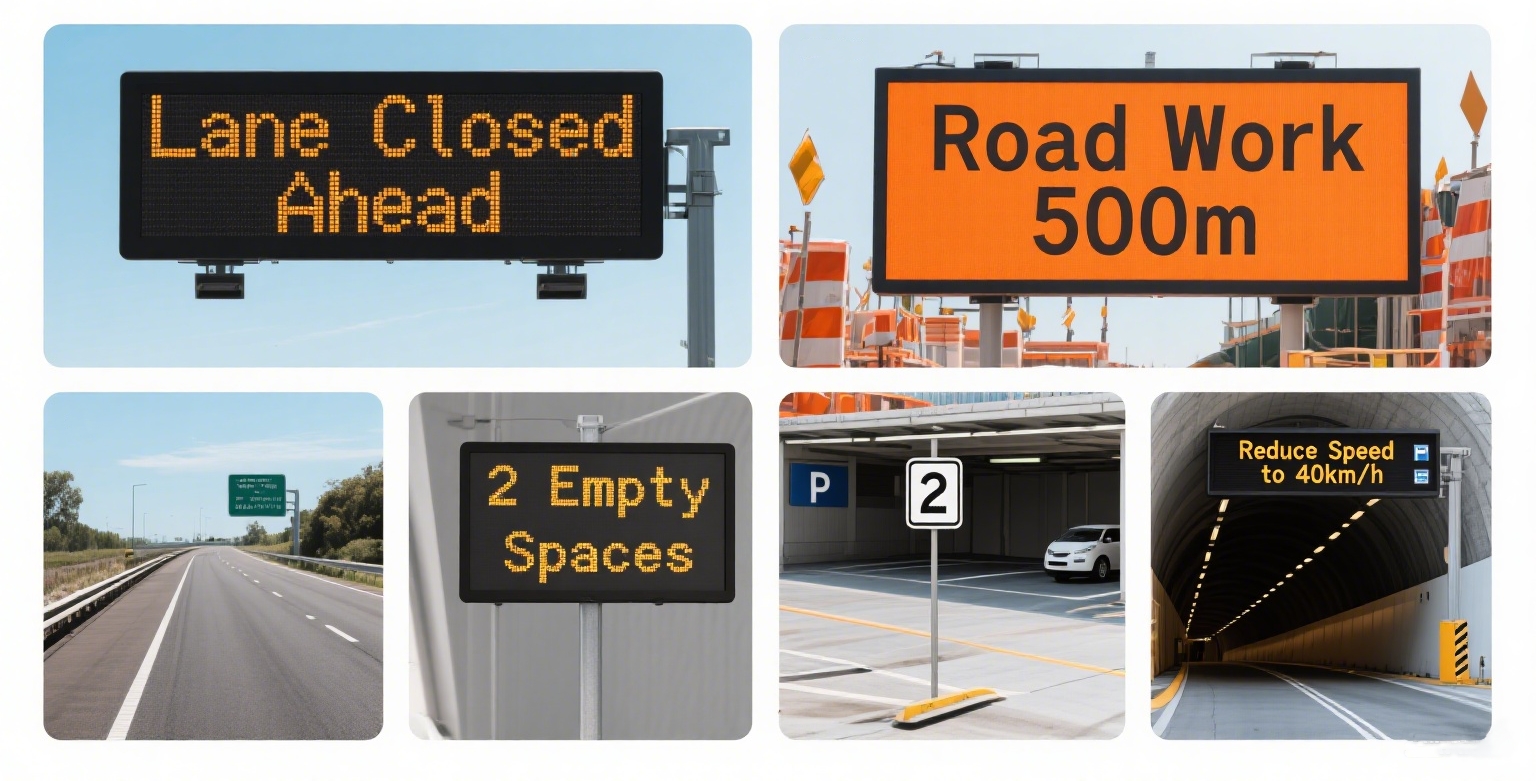22
2025
-
08
How to Choose the Right Outdoor Variable Message Sign
Author:
Variable Message Signs (VMS), also known as changeable message signs or electronic traffic boards, have become an essential tool in modern traffic management. From highways and tunnels to construction sites and parking facilities, these digital LED signs deliver real-time information that keeps drivers safe, reduces congestion, and improves overall traffic efficiency.
But with so many options on the market, how do you choose the right outdoor VMS for your project? The decision is not only about price—it involves visibility, durability, compliance with international standards, and ease of operation. This guide will walk you through the key factors to consider before purchasing.
What Is an Outdoor VMS?
An outdoor Variable Message Sign is an electronic display, typically LED-based, that shows dynamic text or symbols to communicate road conditions, warnings, or guidance. Unlike traditional static signs, VMS can be updated instantly via control software or wireless systems, making them highly versatile.
Common applications include:
- Highway traffic control and lane management
- Road construction and detours
- Tunnel safety instructions
- Parking availability signs
- Ports, airports, and logistics centers

A well-selected VMS not only enhances safety but also demonstrates compliance with regional traffic regulations.
Key Factors When Choosing an Outdoor VMS
1. Display Quality & Visibility
- Visibility is the first priority for any outdoor VMS.
- Brightness: A good VMS must remain clear under direct sunlight. High-luminance LEDs (≥6,000 cd/m²) are recommended.
- Viewing Angle: Wide horizontal and vertical viewing angles ensure messages are seen from multiple lanes and distances.
- Resolution & Text Size: Clear legibility is crucial. For highways, larger pixel pitch is acceptable; for urban use, finer resolution improves readability.
2. Durability & Weather Resistance
Outdoor VMS units are constantly exposed to harsh environments. Key specifications include:
- Ingress Protection (IP Rating): IP65 or higher is recommended for dustproof and waterproof protection.
- UV Resistance: Anti-UV coating prevents fading under strong sunlight.
- Temperature Range: Ensure the sign can operate in extreme climates (–40°C to +70°C).
3. Power Supply & Control System
- Power Options: Choose between solar-powered systems for remote areas or AC mains for permanent installations.
- Control Methods: Modern VMS supports 4G, Wi-Fi, Ethernet, or fiber-optic communication
- Software Compatibility: User-friendly management software allows operators to edit and schedule messages quickly.
4. Certification & Compliance
Compliance with regional standards ensures your VMS is legally acceptable and safe for road use.
- Europe: EN12966 certification is the benchmark for VMS on European highways.
- United States: MUTCD (Manual on Uniform Traffic Control Devices) compliance is required.
- Australia/New Zealand: AS 4852 standards apply.
5. Installation & Maintenance
- Portable vs. Fixed: Portable trailer-mounted VMS is ideal for temporary roadwork, while fixed VMS is suited for permanent highway applications.
- Modular Design: A modular LED cabinet allows easy replacement of faulty modules without shutting down the whole system.
- Service Access: Front or rear access doors simplify on-site maintenance.
Common Mistakes to Avoid
When purchasing VMS, many buyers make costly errors:
- Focusing only on price – Low-cost signs often lack certification, resulting in fines or replacement costs later.
- Ignoring software – A complex, outdated control system can waste time and reduce efficiency.
- Overlooking environmental conditions – A sign that works in mild climates may fail under heavy snow, strong winds, or desert heat.
Conclusion
By carefully evaluating these factors, you can select a VMS that not only meets your project’s requirements but also delivers long-lasting value.
Looking for a trusted supplier of outdoor VMS?
Our company specializes in LED traffic solutions, offering VMS, traffic signal lights, and customized designs for global clients. Contact us today to discuss your project needs!
LED,VMS,Highway Traffic Signs
Latest Blog
2025-10-27
Solar Road Studs: Guiding Lights for Safer Journeys
Solar road stud is an active lighting road warning device that utilizes solar energy as its power source.It makes night-time road driving more safe.
2025-10-24
Eco-Friendly Solar Radar Speed Limit Sign
The eco-friendly solar radar speed limit sign represents a significant step towards integrating sustainability into our infrastructure while prioritizing road safety. By harnessing renewable energy, reducing environmental impact, and promoting responsible driving behavior, these signs embody a holistic approach to traffic management.
2025-10-21
Height Limiting Node Integrated Machine | Precise Height Limiting, Automatic Road Closure
The height-limiting node integrated machine has effectively improved the passage efficiency of expressway toll stations and reduced congestion.
